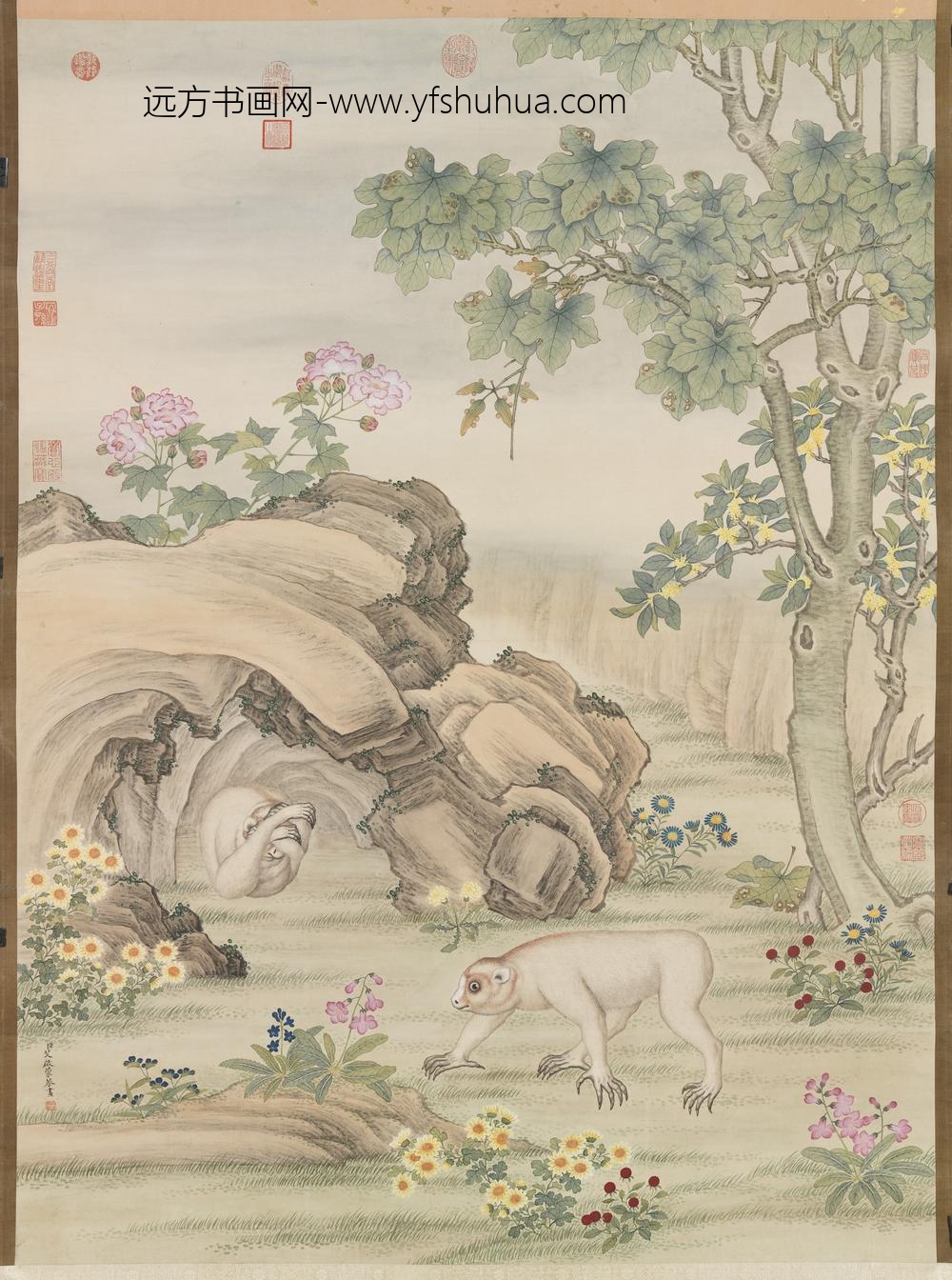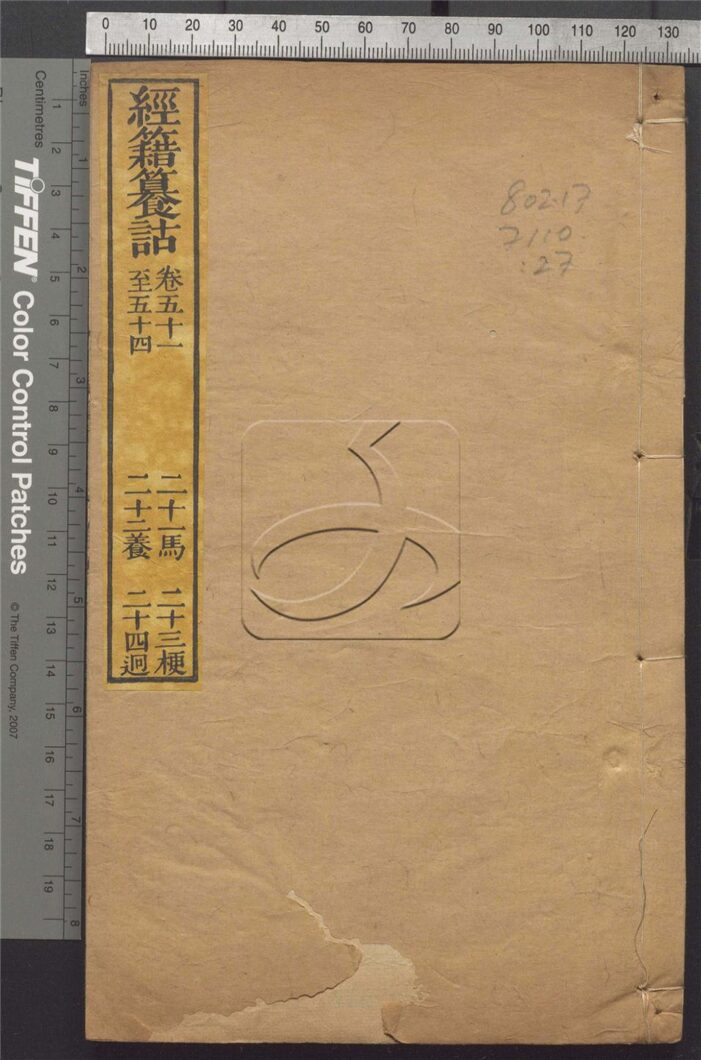【作品基本信息】
| 作者 | 艾启蒙 |
| 品名 | 画风猩图轴 |
| 朝代 | 清代 |
| 文件大小 | 18.03MB |
| 分辨率 | 300×300 |
| 像素大小 | 2115×2843 |
| 尺寸(CM) | 17.9×24.07 |
| 作品数量 | 1.0 |
| 作品收藏 | 台北故宫博物院 |
基本数据
| 藏品类型 | 绘画 |
| 品名 |
清艾启蒙画风猩 轴 Two Lemurs |
| 分类 | 绘画 |
| 作者 | 艾启蒙 |
| 数量 | 一轴 |
典藏尺寸
| 【位置】 | 【尺寸】(公分) |
| 本幅 | 121×90 |
质地
| 【质地位置】 | 【质地】 |
| 本幅 | 纸 |
题跋数据
| 【题跋类别】 | 【作者】 | 【位置】 | 【款识】 | 【书体】 | 【全文】 |
| 作者款识 | 艾启蒙 | 本幅 | 臣艾启蒙恭画 | 楷书 | |
|
印记: 恭画 |
|||||
印记资料
| 【印记类别】 | 【印记】 |
| 鉴藏宝玺 | 乾隆鉴赏 |
| 鉴藏宝玺 | 宣统御览之宝 |
| 鉴藏宝玺 | 嘉庆御览之宝 |
| 鉴藏宝玺 | 乾隆御览之宝 |
| 鉴藏宝玺 | 养心殿鉴藏宝 |
| 鉴藏宝玺 | 宝笈重编 |
| 鉴藏宝玺 | 石渠定鉴 |
| 鉴藏宝玺 | 石渠宝笈 |
| 鉴藏宝玺 | 三希堂精鉴玺 |
| 鉴藏宝玺 | 宜子孙 |
主题
| 【主题类别】 | 【主题(第一层)】 | 【主题(第二层)】 | 【主题说明】 |
| 次要主题 | 树木 | 梧桐 | |
| 其他主题 | 花草 | 桂花 | |
| 其他主题 | 花草 | 芙蓉 | |
| 其他主题 | 花草 | 菊 | |
| 其他主题 | 走兽 | 猿 | 风猩 |
| 其他主题 | 花草 | 花 |
技法
| 【技法】 | 【技法细目】 |
| 工笔 | |
| 没骨 | |
| 皴法 | |
| 皴法 | 斧劈皴 |
参考数据
| 【类别】 | 【参考数据】 |
| 收藏着录 | 石渠宝笈续编(养心殿),第三册,页1270 |
| 收藏着录 | 故宫书画录(卷八),第四册,页131 |
| 收藏着录 | 故宫书画图录,第十四册,页105-106 |
| 内容简介(中文) |
艾启蒙,(公元一七0八至一七八0年),字醒庵,波西米亚人。乾隆十年入如意馆,与朗世宁、王致诚同为画院供奉。善画,尤工翎毛,赐三品衔。 山径之末,累石成穴,梧桐、丹桂、芙蓉,杂以野菊秋卉,风猩二,一蜷伏洞中,一逡巡洞口。笔墨遒细而秀润,设色雅淡而清丽,与邹一桂蒋廷锡笔画有契合处,为艾氏精心之作。 |
| 内容简介(英文) |
Ignace Sichelbart, known in China as Ai ch’i-meng, was a native of Bohemia. He entered the Ju-i kuan in 1745, where he served in the Imperial Painting Academy with Giuseppe Castiglione (Lang Shih-ning). In this painting firmiana, cinnamon and wild chrysanthemums are clustered around the mouth of a cave situated at the end of a mountain path. Curled in a ball, one lemur crouches within the cave while the other prowls nearby. The brushwork is fine, strong and elegant and the use of color displays beautiful restraint. The painting is similar in places to fine-line style of Sichelbart’s Chinese contemporaries, Tsou I-kuei and Chiang T’ing-hsi. |
| 内容简介(中文) |
艾启蒙(公元一七0八-一七八0年),波西米亚人。乾隆十年(公元一七四五年)入如意馆,与朗世宁、王致诚同为画院供奉。 山俓之末,迭石城穴,梧桐、丹桂、芙蓉、杂以野菊秋卉,风猩二,一蜷伏洞中,一巡于洞口。经过专家比对,这称为「风猩」的动物可能是一种分布于云南或广西南部的原始的猴类,又称为蜂猴或懒猴。 |
| 内容简介(英文) |
Ignatius Sichelbart was a Bohemian who entered the Ju-i Hall in 1745 and worked with Giuseppe Castiglione and Jean Denis Attiret as painters at the Ch’ing court. At the end of a mountain path, piles of rocks form a cave opening. The surroundings are interspersed with wild chrysanthemums among firmiana, osmanthus, and hibiscus plants. The two animals that appear here are known as a “slow loris”.One is curled up in the cave and the other is at the entrance. According to experts, this type of animal is a kind of primitive primate found in the more tropical parts of China. It is also known by the Latin name Nycticebus coucang. |
| 内容简介(中文) | 艾启蒙为波西米亚(今捷克)人,乾隆十年(1745)来华以画艺服务宫廷。四十二年(1777)曾以七十岁生日获乾隆皇帝赏赐礼物,是郎世宁之后最重要的清宫西洋画家。艾启蒙画风虽与郎世宁同为写实倾向,画技却略逊一些。风猩为一种懒猴,多产于中国西南地区,眼睛圆大、耳朵小时而隐在毛下,有发达的手指,利于攀爬树枝,以活动迟缓得名。 |
| 内容简介(英文) | Ignatius Sichelbart was originally from Bohemia (in modern Czechoslovakia), arriving in China in 1745 and entering the service of the Ch’ing court as a painter. To celebrate his seventieth birthday, he even received a gift from the Ch’ien-lung Emperor (r. 1736-1795) in 1777. He was the most important Western artist at the Ch’ing court after Giuseppe Castiglione (1688-1766). Although Sichelbart’s painting style is similar to that of Castiglione in terms of the tendency towards realism, his technique was slightly inferior. Depicted in this painting is a loris, which can be found in southwestern China. The slow loris features large eyes and small ears hidden among its fur. It has well-developed fingernails for climbing trees and is noted for its slow movement, hence the name. |
| 参考书目 | 1.王耀庭、陈韵如,〈清艾启蒙画风猩〉,收入王耀庭主编,《新视界 : 郎世宁与清宫西洋风》(台北:国立故宫博物院,2007年初版),页130-131。 |
【部分页面截图】

FX-清-艾启蒙-风猩图-台北故宫博物院



-第五册_1020173349_1.jpg)
